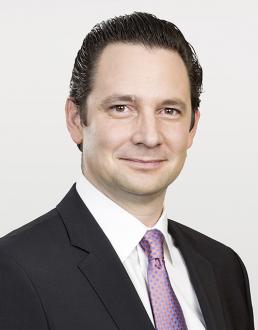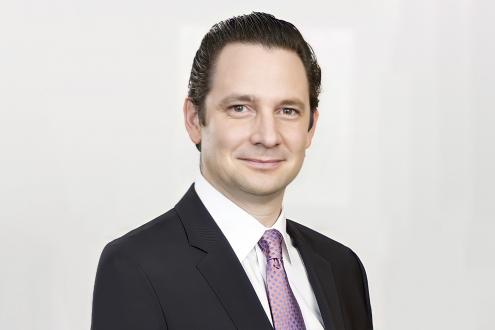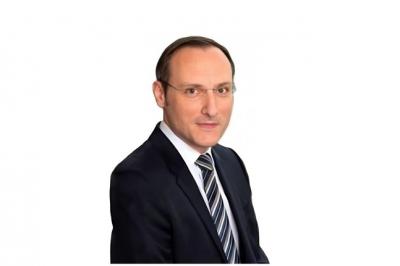The Quest for Safe and Reliable Income and Today’s Uncertain World

Gregoire Mivelaz of GAM Investments
Sep 22, 2022
A Hubbis Thought Leadership Discussion - In Association with Exclusive Partner: GAM Investments
On 27 June and 29 June, Hubbis hosted two live behind-closed-doors thought leadership discussions in Kuala Lumpur and Bangkok respectively, in association with our exclusive partner for the events, GAM Investments from Switzerland. The mission was to hear from key individuals in the region’s wealth management community about their needs and the expectations of their increasingly sophisticated high-net-worth (HNW) and ultra high-net-worth (UHNW) clients with regards to fixed income investments. In particular, the discussions centred on the need and quest for income in today’s uncertain world.
Gregoire Mivelaz, Fund Manager and member of Atlanticomnium’s Management Committee at GAM Investments, gave guests some fascinating insights. In particular, he focused on the logic of buying into fixed income primarily for yield, and especially subordinated paper issued mostly by banks and other financials; these investments, he said, have offered decades of proven income and, given the sell-off in the markets this year, also offer the potential for capital gains. We have presented his insights from both events below as on-the-record observations and statements.
He explained to the guests how there are numerous opportunities in income-bearing or accruing securities with fixed principal amounts, including junior debt securities, preferred shares, convertible securities and contingent capital notes.
Introductory Remarks from Terence Bong, Managing Director – Head of Singapore at GAM Investments
“Headquartered in Zurich, GAM Investments is an active, independent global asset manager established in 1983. Our heritage is actually in wealth management, because we were part of both UBS and then Julius Baer, becoming independent in 2009 when we were spun out of Julius Baer in a listing on the Swiss market. We are today still completely independent, in the sense that we are not affiliated with any bank, investment bank, or other type of wealth management institution.
We have three core businesses. One is investment management, which is my purview. Second is the asset and wealth management business, essentially managing money for wealthy clients, understandable as our heritage is within two well-known Swiss banks. And we also have what we call fund management services, whereby we offer our UCITS capabilities, and we make that available for people who want to sell UCITS funds around the world.
We have been present in Hong Kong since 1990, and we opened the Singapore office last year, from which we cover the ASEAN region. In Thailand, we have a feeder fund wrapped by SCB Asset Management.
We are fortunate enough to have Gregoire talking at these two events. He is a specialist fund manager in credit and fixed income, and he is here to listen to your views and to offer his insights into where he thinks there are opportunities for income and gain for private investors.
Setting the Scene for the Conversations - Insights, Observations & Comments from the Guests
The two events were attended by senior management and product gatekeepers at private banks and wealth management firms, as well as asset management companies. We have selected some of their many observations and presented them without attribution:
An obvious statement but nevertheless highly pertinent – things have changed dramatically in the global financial markets
A private banker opened his observations by stating that the main global equity markets are now best suited for stock pickers, and are no longer that suitable for passive investing. In fixed income, it is too early to spot the opportunities, he said; hence he advises holding short-dated US Treasury paper.
He said the most important mission right now is not to lose more money. “The game is about capital preservation right now,” he stated. “And we would not be rushing in to buy the big dips, as markets could fall another 20% or 40%, we simply do not know yet. A good and honest private banker or asset manager says to clients that on the upside, we won't do as well as some, but on the downside, we are going to do better than most. Private banking is all about capital preservation.”
For many, there are few major surprises in 2022 events; the downturn was well-telegraphed
A veteran EAM leader who has navigated clients through numerous major downturns and crises said that inflation, rising rates and falling valuations are all the inevitable result of many years of excess but then compounded by unforeseen shocks such as the pandemic and the Russian invasion of Ukraine.
“And perhaps the biggest thing that many people seem to have missed was that for the US 2022 financial year, their federal budget at USD 3 trillion gross is about USD 1.5 trillion net short of the year before, and that is absolutely massive,” he said. “But overall, the reality is that there's nothing that's happened so far that you couldn't have expected. So now, the question is, what next?”
Answering his own question, he said the Federal Reserve (Fed) and other policymakers are now doubling down on their mistakes, which could make things worse and worse.
“The technicals appear to indicate there is no bottom to this market rout, at some point, you have to assume that policy is going to change, and that when it does, we'll be back more to good old days, the 2020 or 2018 type situations,” he commented. “And that's when you want to start judiciously adding some risk. But it is not yet - we ourselves tried adding a little bit of risk back on in April - we had actually been up overall year-to-date through March – and got our kneecaps taken off. Luckily, we had only added a small amount of risk.”
He concluded his comments by stating that there could be rallies, but for most, it is best to sell those, not buy. And then wait patiently for policy to change. “But the Fed needs to be careful not to release the taps too late,” he warned. “If the Dow slumps below 26000, then we could be facing really serious trouble!”
Another guest said he feels less pessimistic, thinking that inflation will peak by the third quarter and the risk of recession will also help drive policy towards liberalisation in 2023 or 2024. That could lead to a major fear of missing out rally, potentially as early as later in 2022.
A fellow expert observed that inflation is rampant in the US and the UK – which he said incidentally is a dreadfully managed economy currently – but inflation is not so bad in Europe and far less bad in Asia and other emerging market (EM) economies. “We wrote a piece for clients recently and highlighted US inflation as higher than most Latin American countries these days,” he reported. “We said the US has turned into a Banana Republic!”
Are we already in, or are we soon heading to stagflation and potentially a worse bloodbath? Some believe that we are, while others are less pessimistic
A real estate specialist at the Malaysia event reported that as far back as November 2020, his firm had anticipated stagflation and today expects a ‘Great Depression Part II’, starting in 2023. “History is repeating itself after 90 years,” he warned. “More and more investors are getting out of equity markets, and they are taking positions in tangible assets, in bonds, and people are expecting recession; because when consumers stop spending, companies stop investing, and the economies shrink, it is as simple as that. That is certainly what we expect, in the advanced economies first, and then that will spread to Asia maybe next year or in 2024.”
He said that investors had already lost more than an estimated USD 20 trillion worldwide and that they are abandoning the equity markets and shifting into hard assets. “Look at the Qatar Investment Authority, they bought 32 offices in Japan, and GIC from Singapore took major positions in London,” he reported. “Stagflation is back and we do not anticipate recovery until after 2025.”
Another guest, a private banker, took a somewhat less negative view, stating that their house position is that stagflation will be avoided.
“We do expect that eventually there could be some recession, but the indicators aren't showing that just yet,” he commented. “People are actually looking to buy, whether it is in bonds or into equities, and real assets could be an important potential inflation hedge. Overall, we are not as negative about the markets. Realistically, it is too late to sell but also too early to buy because we are still only halfway through the rate hike cycle, and the US Fed is signalling aggressive rate hikes. As of today [June 27] we are probably still in a bear market rally rather than anywhere near the bottom just yet. If the central banks signal that they are done with rate rises, investors will consider returning to risk.”
Another guest agreed with an earlier comment that as soon as the central banks indicate that they are no longer hawkish, that will be a catalyst for the market to reprice.
“For now, if you are concerned about recession, you increase the credit quality of your fixed income holdings; you go for issuers that can absorb a soft or a hard landing.”
A guest observed that their preference is for large international issuers and not for domestic Asia paper, for example. “There are other income opportunities, such as REITs, for example, but many of the private clients here [in Asia] too often want ideas to make double-digit returns to make back all the money they have lost this year!”
Another expert commented on the situation in the Malaysian fixed income market, noting that most of the institutional investors, such as the insurance companies, had done well in fixed income locally for many, many years, except for 2022, which is the first year of negative performance for some 20 years, he said. “Right now, they are not ready to go back in,” he said, “and there are regulatory reasons with the insurers, for example, as to why they will stay a bit more cautious.
The guests in Thailand commented on the weak baht and the inclination for UHNW Thais to buy hard assets such as properties overseas in prime locations such as Hong Kong, Singapore, Switzerland, the US and other liquid markets. HNW investors, they noted, have in recent years been generally expanding mainstream market allocations to global assets via funds and model portfolios, but they have somewhat taken pause during the market falls, for all the reasons other guests have stated.
Views from GAM Investments’ Gregoire Mivelaz, Fund Manager and member of Atlanticomnium’s Management Committee.
Gregoire Mivelaz offered guests many interesting and valuable perspectives and insights during both the Malaysian and Thailand events. We have distilled them into this short summary below, with all comments presented on-the-record:
“We believe that the shift from quantitative easing (QE) to quantitative tightening (QT) is creating extraordinary market conditions.”
The big difference is that we are moving from QE to QT. With QE, you generally want to be long, but if the liquidity has been removed, then actually, we believe it is a market for alpha because you could have a negative beta and still make money. You need to be bottom-up, and highly selective, in our view. We believe it is the same with bonds, and with a clear identification of the risks.
When we invest in bonds, we always think about credit risk, that is the most important thing. Get it wrong and you will likely suffer permanent losses. In our view, we are in a late credit cycle, and credit in general has benefited from the abnormally low interest rate environment, and you now have an inflationary market environment, with liquidity removed. Accordingly, funding costs are going up.
But these new conditions are no reason to abandon bonds
Our experience over that past three-plus decades is that it is generally best to buy and hold fixed income of quality names over the longer-term. We believe “buy and hold” is the best approach, and we like quality names such as HSBC, Standard Chartered, BNP, Allianz, AXA, and other financials, and we prefer buying into the subordinated paper where yields are more generous.
We know the markets and take a bottom-up approach. We like these types of national champions from the financials, the banks, insurance companies, but also on the corporate side, including some of the strongest names from the robust oil and gas sector currently. But there are a lot of other sectors where I would be very concerned. In short, analysis and quality matter.
I do not think investors should give up on bonds. For example, the banks I speak to are telling me that net interest margins in Europe are picking up, for the first time in 10 years, and it is good for earnings. There are sectors that do benefit from rising rates. And you can buy bonds with a fixed coupon, or floating-rate bonds. With the same credits, you then take on different risks.
We are an active manager, and have done this since 1985. We are long-only, we operate a buy and hold strategy with a focus on high quality names, targeting high income largely via subordinated debt. Our strategy has achieved compound annual returns of nearly 8% since 1985 (as of June 30, 2022), which results in more than a 1,000% return over decades.
Year-to-date, our allocations are down nearly 10%, but we have captured 2% income. The bulk of the price drop is due to spread widening, as we have very limited exposure to interest rate risk.
Over the past 17 years, we can count seven periods of systemic crisis, which is roughly every two and a half years. And every time is different, yet it proves not to be the so-called end of the world. If you hold quality paper, if the fundamentals are strong, if you're not taking unnecessary risks, or unnecessary beta, we see from history that the price of bonds normally recovers within six to nine months.
The central banks are faced with two outcomes – neither is ideal, but the reality demands tough action
Looking at the big picture of events in the world, the central banks have two solutions to the current situation. They can try for a soft landing, but that means inflation that is higher for longer, and they could completely lose credibility in terms of inflation expectations.
The alternative is they go hard on inflation now, and effectively create a recession where they cannot control the supply side of the equation but can controlthe demand side. Consumers do react to high inflation. The biggest risk is really food inflation, which normally then leads to geopolitical turmoil and additional risks.
Given all this, I think a soft landing [in the US] is out of the equation, unless the Federal Reserve (Fed) gets very lucky. Therefore, the US may head into a recession, and then there will be an election in 2024.
You also have to look at the core inflation and core inflation in the US at about 5.9% and compare that with Europe at around 3.8% [from the vantage point in late June]. In Europe, the European Central Bank (ECB) wants to calibrate a soft landing because it thinks it can do it; accordingly, the ECB will aim to hike 175 basis points versus the Fed, which looks set to hike interest rates 325 basis points plus.
Surveying the end of this credit cycle, inflation, depressed indices, and looking ahead to new beginnings
And we should think further about the inflationary environment. This is the end of this credit cycle, and it is nothing new to see much higher inflation figures. That is why central banks have to do what they are doing. They might want a soft landing, but I think they are clearly heading toward a hard landing. However, that is not so bad - you just need to identify which sectors can absorb weaker market conditions.
The S&P 500 Index has clearly entered a bear market. There have been 20 bear markets in the past 140 years. The S&P 500 Index could fall 40% by about October, which would we believe means it would hit the bottom. And when that happens, six years of bull markets normally follows, reaching up to 100%. In short, you just need to be very selective.
In a world of major economies in recession, longer duration paper is the way forward
If we are indeed talking about recession, the longer duration paper now starts to become attractive again, in our view. Moreover, in terms of the balance sheets of the central banks, I suggest you do not necessarily believe that they are going to reduce their balance sheets. We have seen this in 2013 and 2018 - when the US Fed said it wanted to reduce assets, indeed it did reduce slightly, but then went on to double the balance sheet.
There are significant opportunities in fixed income if you take the right approach
All in all, we are actually extremely bullish for our target asset class, because of the benefits from rising rates for high-quality, investment-grade issuers that can absorb the effect of a recession. At the leading European banks, for example, asset quality is strong, capital ratios are at all-time highs, so too the liquidity ratios, and other metrics are encouraging. Plus, there is a potential boost in terms of profitability. When you are actively managing money, and you make the right decisions, and if you understand the risks, I think there is always value.
I believe there are some great opportunities. Capital preservation is key for investors now. In the bond markets, we are mostly exposed to financials, but in the corporate sector, oil and gas companies are enjoying massive profits and free cash flow generation, as they are not investing in capex, so their leverage ratios are going down. Their paper has dropped this year, but independent of what central banks do, you can buy their bonds and we think you will get a quick price recovery.
Another example is a major Swiss bank that issued a CoCo [contingent convertible bond] last week, paying a coupon of close to 10%. That is the highest yielding US dollar CoCo ever issued. That bank has had negative press, for a variety of reasons. But the bank has significant excess regulatory capital. If one looks at this bottom-up, we see great value in this paper. And don't forget, this same bank also announced they would call a bond last week, which was trading in 96.
We had a live stress test of the financial sector in 2020 when the pandemic hit. But the banks came through that well and were part of the solution, helping the central banks stabilise sentiment. Looking at the pandemic, none of the banks had to use any of their excess regulatory capital. They pre-provisioned all the expected credit losses in a matter of a single quarter in 2020. And they had put so much provision that last year they were starting to release them again.
I don't have the answers to everything. But really, when you are bottom-up, look at the issuers, the fundamentals, and quantify what is needed to break those institutions. Right now, there is nothing that would justify the types of spreads we see now. Banks across Europe are strong, in our view, and their profitability is improving while their capital positions are very robust.
By the way, as I indicated, we also invest in non-bank paper, for example from the insurers, which also issue subordinated debt because of the regulator’s need for additional capital buffers. I talked about oil and gas companies, and corporate hybrids as a whole account for perhaps 10% to 15% of our total holdings.
These are European instruments; the corporate hybrid market was just EUR 30 billion 10 years ago and is worth EUR 250 million today, meaning it is a much bigger and more diversified market. The corporates we look at are all investment-grade high-quality names, and today include some of the oil and gas companies, as I mentioned.
We also sometimes invest in paper issued by private companies, where the fundamentals are highly appealing from our analysis. Interestingly, for example, we own subordinated paper of one company that could easily fully pay back their unsecured debt within less than two years, but you can buy those bonds in the low 80s or below today.
Price movements in either direction are, of course, also driven by spreads as well as interest rates
I should add that amongst euro-denominated bonds, some one-third of the price moves have been driven by interest rates, while for the US dollar bonds, we estimate more like 40% of the price moves are driven by rates and the remaining 60% driven by spreads widening.
With fundamentals for financial sector paper having actually further improved quarter-on-quarter, I think there is going to be a quick catch-up on the spread side, even while rates will likely stay higher for much longer.
We have seen that risk-off leads to wider spreads, then as the situation normalises, spreads start to tighten again. The catalyst for that spread tightening could be central banks indicating that they are quite happy in terms of front-loading their rate rises. As the spreads contract again, this will help performance.
Subordinated debt has strong appeals at all times and amid all types of conditions
In summary, we remain extremely positive about selected subordinated debt. It is a roughly half a trillion US dollar market in Europe, which is bigger than European high yield. Roughly 90% of this market is owned by real money, the institutional holders. Mutual funds actually only account for 10% of this market. If you look at European high-yield paper, it is pretty much the opposite.
The bulk of investors we work with in subordinated paper are buy and hold investors; they are seeking quality income. Year-to-date, we have obviously seen some significant price volatility; we were down 10%, but we saw no defaults and no downgrades. During these challenging times, we have hardly had any questions from our investors because they understand that the fundamentals are strong. Their worries have mostly centred on any potential exposure to Russia.
As a firm, we have been doing this since 1985. We have survived various crises, including, of course, the Global Financial Crisis. The average income generated in our portfolios in the past 10 years was 6%. Average annual income over the past five years was 5% in US dollars, and we are heading back towards 6% as rates begin to rise.
This is a very interesting time; there is room for gains as well as the potential to buy the assets we target at discounts. But our investors are seeking income; that is what drives them.
I would like to thank you all for coming, for offering your own views and for listening to my observations. As I said, I do not have all the answers. But we have been doing this for a long time, we are highly disciplined in our bottom-up approach, and we have proven our capabilities by consistently achieving the goals we set out for our investors over several decades.
Disclaimer: Past performance is not a reliable indicator of future performance. There is no guarantee that forecasts will be achieved.

Fund Manager and member of Atlanticomnium’s Management Committee at GAM Investments

More from Gregoire Mivelaz, GAM Investments
Latest Articles






